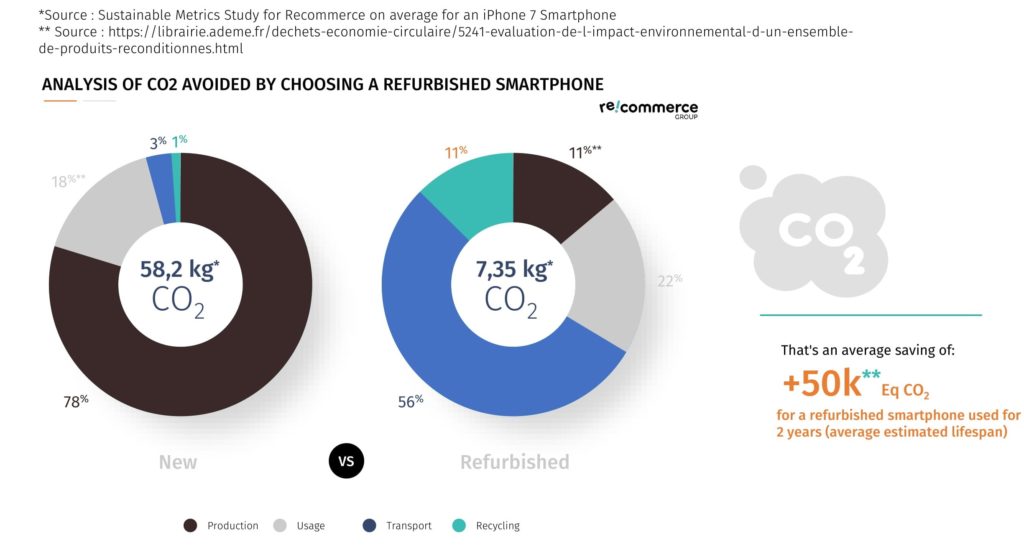Refurbishment industry
European Refurbishment Association

What is Refurbishment?
Refurbishment is giving devices a second life. It consists of collecting, testing and repairing functions on a smartphone and returning them to other consumers or businesses. All data are wiped and the second owner can use the smartphone as if it were new. Companies can resell smartphones on their own commercial websites and through shops, and/or work with operators and retailers.
The refurbishment market in Europe
The refurbishment market is currently worth around €5.2 billion in Europe and is expected to surge from USD 27 billion globally (in 2019) to USD 67 billion in 2023.
Second-hand smartphones represent 10% of total smartphone sales in some countries (France, Germany) with an expected annual growth rate of around 10% in the coming years. The market is growing thanks to the financial and environmental benefits both for purchasers and the planet. This trend is especially marked among young people seeking more responsible solutions. The pandemic boosted growth in 2020 as individual purchasing power shrank.
The industry also generates a lot of employment, and some companies have been officially recognized for their performance. Many telcos, operators and retailers are part of buy-back and repair programs with refurbished players to get a clear and upstream vision of the market and flux, and to maximise costs by operating with large amounts of devices.
At EU level, the refurbished industry can also help Europe decrease its trade deficit to China and the US, from where many old smartphones still enter the EU refurbished market to be sold on online marketplaces.
Why refurbishing our smartphones ?
Refurbished players promote sustainable development by enhancing a smartphone’s elements and benefits.
First and foremost, refurbishment actively helps reduce our environmental footprint. 85% comes from the manufacturing and transport that follows the extraction and treatment of raw materials. In comparison, a refurbished smartphone uses only 7kg of CO2, mainly during transport from collection site to repair site, and similar. All in all, choosing a refurbished smartphone saves 50kg of CO2 at a time where the planet is already imperiled by human activities and its resources under threat.

Refurbishment also has social advantages for both industry and consumers.With the pandemic having hit consumer purchasing power, refurbishment gives more individuals access to high-quality devices. And with ongoing technological advances and individuals’ need for more and higher-performance IT devices, refurbishment provides high-quality smartphones at their best-value price, far more affordable than brand new smartphones.
So refurbished smartphones meet a vital need by giving less well-off consumers access to affordable high-tech devices.
Upstream in the refurbishment process, the sector also boosts individuals’ purchasing power by buying back their old and unused smartphones.
